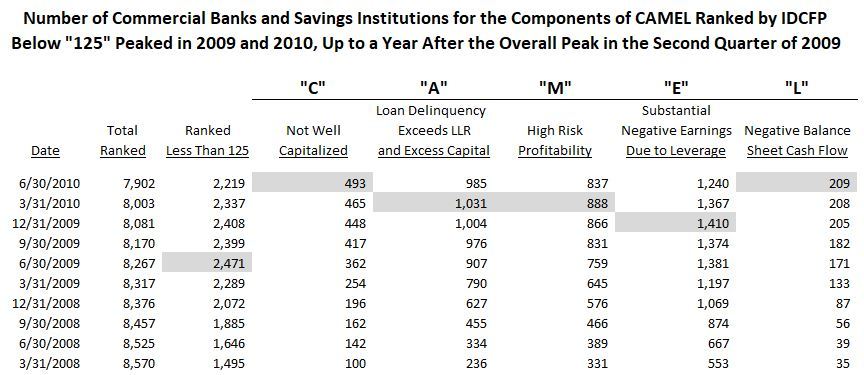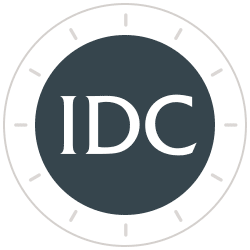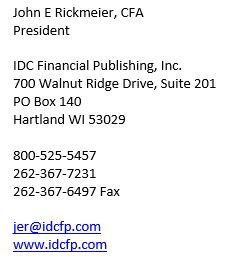Earnings Returns - - The “E” in CAMEL
IDC Financial Publishing, Inc. (IDCFP) uses the acronym CAMEL and its component financial ratios to evaluate the safety and soundness of commercial banks and savings institutions. This article explains how IDCFP uses earnings returns as a component of its CAMEL ranking system and why it is valuable and important to monitor.
The separation of Earnings in ROE into Earnings from ROEA and ROFL provides insight into management’s operating and financial decisions and management style. Good management strives to increase Return on Equity (ROE) above IDCFP’s definition of Cost of Equity (COE). Success in raising ROE greater than COE is demonstrated by the commensurate level of stock prices to book value (a consistent linear relationship as presented by IDCFP each quarter).
ROEA is defined income from operations (income from loans, investments and non-interest income less operating expenses and applicable taxes and the change in the loan loss reserve, as a percent of earning assets) to reflect operation of a bank or savings institution, as if equity and loan loss reserves were total liabilities and capital.
ROFL is defined income from financial operations. It reflects the degree to which a bank or savings institution uses deposits and debt to finance its operating strategy based on the after-tax cost of these deposit and debt funds. ROFL consists of leverage spread (return on earning assets less cost of adjusted deposits and debt, both after-tax) times the leverage multiplier (the ratio of adjusted debt to equity plus the loan loss reserve). Adjusted debt equals earning assets (before the loan loss reserve) less equity capital and loan loss reserves.
The risk in a bank or savings institution is an ROE less than COE, which destroys shareholder value. The major risk, however, to the institution’s safety and soundness occurs when ROE is less than COE and ROFL is negative. Operating earnings ratio (ROEA) is low or negative and the leverage spread is negative, causing financial leverage to create an even greater loss as reflected in ROFL.
Commercial Banks and Savings Institutions with ROE less than COE and Negative Return on Financial Leverage (ROFL) are so Deficient in Profitability to Receive an IDCFP Rank Below “125” (300 the Highest and 1 the Lowest)
As seen in the table below, institutions ranked less than the industry standard for investment grade of “125”, peaked in the 2nd quarter of 2009 at 2,471 or 30% of the 8,267 total number of domestic commercial banks and savings institutions. The negative “Earnings” ROFL test and number of banks and savings institutions peaked at 1,410 two quarters later in December 2009.
Other rating agencies that primarily focus on capital ratios and delinquency of loans fail to capture the risk in profitability and negative financial profits times leverage. As seen in the analysis of the components of CAMEL as calculated by IDCFP, all other categories of CAMEL lagged, but the ROFL analysis was concurrent.
This illustrates that all 5 categories of rank, C-Capital, A-Adequacy of Capital, M-Margins as a Measurement of Management, E-Earnings from Operations and, separately, Earnings from Financial Leverage, and finally, L-Liquidity all together provide a timely indication of risk and potential failure.
Most important, the number of banks and savings institutions with IDCFP ranks below “125” began sharply increasing after the 2nd quarter of 2006, well before the financial crisis of 2008 and 2009.

IDCFP has been helping CD brokers and investors, insurance companies, federal agencies, numerous state governments and a host of other institutions make better decisions using its unique and proprietary CAMEL rating methodology since 1985. For more information on CAMEL go to www.idcfp.com or call 1-800-525-5475.

